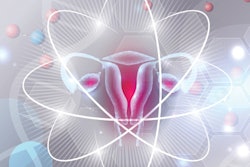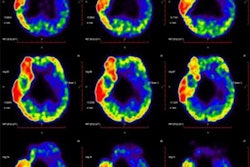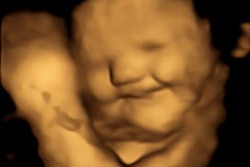
Abnormal findings like white-matter damage found on cranial ultrasound scans performed in the first two weeks of the life of an infant are linked to neurobehavioral issues later on, according to research published April 8 in JAMA Network Open.
Researchers led by Dr. Jennifer Helderman from Wake Forest Baptist Medical Center in North Carolina found that certain early lesions found on cranial ultrasound are associated with hypotonicity, poor quality of movement, and lower attention in infants as they matured to term-adjusted age.
"Infants with these cranial ultrasound lesions might benefit from targeted interventions to improve neurobehavioral outcomes during their newborn intensive care unit hospitalization," Helderman and colleagues wrote.
About 10% of births in the U.S. are preterm, meaning infants are delivered before 37 weeks' gestation. Of those born before 32 weeks, neurodevelopmental impairments develop in about 17% of infants.
Cranial ultrasound is typically used in newborn intensive care units to identify brain abnormalities linked to cerebral palsy and other impairments. However, there is a lack of data on ultrasound being used with the neonatal network neurobehavioral scale, which predicts impairments in preterm newborns and infants with varied risk factors.
Helderman et al wanted to find out if cranial ultrasound findings in the first two weeks of life were linked to scale scores when infants are discharged from intensive care units. The goal was to identify early neurobehavioral risk indicators which could help plan for targeted interventions in intensive care and after discharge.
They looked at data from 675 infants who had data from both cranial ultrasound scans and scale scores. Data was collected between 2014 and 2016, and the researchers included infants who were born before 30 weeks' gestational age. Early ultrasound was performed at three to 14 days after birth and late ultrasound was performed at 36 weeks' postmenstrual age or intensive care unit discharge.
A total of 156 infants had lesions found on early cranial ultrasound, and 76 infants had white-matter damage as measured by echogenicity on ultrasound scans.
The researchers found that lower attention, hypotonicity, and poorer quality of movement were observed in infants with white-matter damage. They also observed lower attention and hypotonicity in infants with early cranial ultrasound lesions.
| Correlation of abnormal ultrasound findings with neurobehavioral issues in infants | ||||
| No white-matter damage on cranial ultrasound | White-matter damage on cranial ultrasound | No lesions on cranial ultrasound scans | Lesions found on cranial ultrasound lesions | |
| Birthweight (grams) | 962 g | 897 g | 967 g | 915 g |
| Average head circumference | 24.6 cm | 23.8 cm | 24.6 cm | 24.2 cm |
| Attention (scale score) | 5.34 | 4.88 | 5.38 | 4.91 |
| Hypotonicity (scale score) | 0.21 | 0.34 | 0.19 | 0.33 |
| Quality of movement (scale score) | 4.61 | 4.43 | 4.61 | 4.54 |
The researchers wrote that their findings for short-term associations compare with associations between the neonatal network neurobehavioral scale and structural volumes on MRI and electroencephalogram findings. However, they added that ultrasound is safer, more efficient, and "significantly" less expensive than MRI.
"Furthermore, near-term conventional MRI is not superior to cranial ultrasound in predicting severe impairments at early school-age," they wrote.
The team also pointed out some potential strategies for when lesions are identified on ultrasound that aim to reduce or prevent hypotonicity, as well as improve movement quality and attention.
These include closer monitoring by therapists for infants with early ultrasound and white-matter damage events and providing enriched environments with supportive interventions for neurobehavioral adjustments.




















